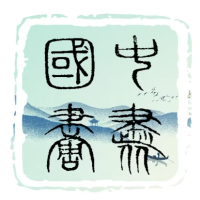赵无极,法籍华裔画师,籍贯镇江,农历辛酉年正月十六生于北平,家族源自宋皇室,乃赵氏七子之长。少时随父汉生于南通就学,卒小学、中学业,自幼才华出众,尤擅文史。十龄嗜绘,挥洒自如,此天赋盖承父汉生之遗。汉生业余画家,兼任上海商业储备银行常务董事,作品曾获巴拿马国际画展奖,为赵无极艺途奠基。祖父尝语曰:“艺中唯书法最传情。”此言深印无极心中,遂为创作启迪,贯其终生,成其艺之精髓。
Zao Wou-Ki, a French-Chinese painter, was born in Peking on the sixteenth day of the first lunar month of the Xinyou year. His ancestral home is Zhenjiang, and his family traces its origins back to the Song imperial clan. As the eldest of seven children in the Zhao family, he followed his father Zhao Hansheng to Nantong for his primary and secondary education. From a young age, Zao demonstrated extraordinary talent, particularly in literature and history. By the age of ten, he was already adept at painting, a gift he likely inherited from his father. Zhao Hansheng, an amateur painter, also served as the executive director of the Shanghai Commercial and Savings Bank. His works won awards at the Panama International Art Exhibition, laying a solid foundation for Zao Wou-Ki’s artistic journey. Zao’s grandfather once said, "Among all the arts, only Chinese calligraphy most effectively conveys emotion." This statement left a deep impression on Zao, becoming a guiding principle throughout his life and forming the essence of his art.

自乙未年至辛亥年间(1955年—20世纪60年代),赵无极创作臻巅。其时,作“甲骨文系列”及“抽象风景”,为艺途之大转折,实则新阶段肇始。画家脱旧观新,取宇宙自然、生命大气、时光嬗变为题,描绘无形之物,兼融山水、甲骨、书法、铭文、雕刻诸抽象线条与表现元素。
至辛亥至己巳年间(20世纪60—70年代),赵氏画作渐脱法则,纵意挥洒,以创新组合表达内在需求。其构图不拘传统,整体更具动态,不规则色块亦能平衡空间。
庚戌岁末(1970年末),赵无极画风两途:一则极早期之戏剧,觅恒专风格;复拾少时书法,油画练习。辛亥至己巳,弃外界定见,重融图像空间,臻完善境。己未(1979年),舍旧法,建新风,创“骨架”强法,取甲骨风格,柔光围暗,展细节,营静谧对话之态。
癸亥至庚辰(20世纪80年代),年长阅深,作品渐注温情灵逸,激情对立融于云水,重画面调和,色彩流畅。可谓以文字符号立里程,用色彩晕染拓意境。
From the Yiyou to Xinhai years (1955 to the 1960s), Zao Wou-Ki reached the peak of his creativity. During this period, he produced the "Oracle Bone Series" and "Abstract Landscapes," marking a significant turning point in his artistic journey, the true beginning of a new phase. The artist broke away from old perspectives, taking the cosmos, natural elements, the breath of life, and the transformation of time as his themes to depict intangible subjects. He combined abstract lines and expressive elements from Chinese landscape painting, oracle bone inscriptions, calligraphy, epigraphy, and sculpture.
From the Xinhai to Jisi years (1960s to 1970s), Zao's works gradually freed themselves from all rules, expressing his inner needs and emotions through innovative combinations. His compositions departed from traditional abstractions, making the overall works more dynamic; irregular color block arrangements also maintained spatial balance.
At the end of the Gengxu year (late 1970s), Zao Wou-Ki's artistic style diverged in two directions: one pushing early dramatic creations to their extremes, seeking a consistent style; the other revisiting his early calligraphy, practiced through oil painting. From Xinhai to Jisi, he abandoned external definitions, re-integrating images and spaces to reach a more complete realm. In the Jiwei year (1979), he discarded old methods and fully invested in establishing a new style, creating a powerful "skeleton" technique. Drawing from oracle bone styles, he used soft light to envelop and reveal dark details, fostering a tranquil dialogue with the viewer.
From the Guihai to Gengchen years (1980s), as Zao aged and his experience deepened, his works increasingly imbued warmth and ethereality. Passion and opposition gradually merged into clouds and mist, with greater emphasis on harmony in the composition, and more fluid use of color. Thus, he established milestones with symbolic characters and expanded artistic expression through the subtle interplay of colors.















赵无极融西画与油彩,合华夏意蕴,创色变笔劲、韵律光感之新境,誉为“西方抒情抽象派代表”。其作层次丰厚、结构分明,用色大胆柔和,中西合璧,哲理内含。其画书法笔触,构图开放,元素均布,轻松随意,囊括抽象诸特征,纯烈色彩,泼洒笔触,非具象表现。于单纯强度中,展心灵原风奇观。书法系列取古青铜籀文篆书,置历史烟云,书符若电光雷击中醒复。
Zao Wou-Ki integrated Western painting techniques with oil colors and Chinese cultural essence, creating a new realm of changing colors, vigorous brushstrokes, rhythm, and luminosity. He is hailed as a representative of the "Western Lyrical Abstraction." His works are rich in layers, distinct in structure, bold yet soft in color, blending Eastern and Western styles with philosophical undertones. His paintings feature calligraphic brushstrokes, open compositions, evenly distributed elements, and a casual, spontaneous feel, embodying the characteristics of abstract art: intense colors, splashy brushstrokes, and non-representational expressions. In the simplicity and strength of his works, he reveals the original landscapes of the soul. His calligraphy series draws from ancient bronze inscriptions and seal scripts, placing them in the mists of history, with the characters seemingly revived by flashes of lightning.
赵无极以书符入画,挥洒于画布,活化字形,肇始于彼。握二要:一为光之营造,若缕光点燃符形,穿透其间;二为油之挥写,善用油彩,滋润画面,释胸中块垒快意。赵无极凝神守“惚恍有象,恍惚有物”之训,置身烟雨山水之浑茫。特制羊毫挥写,虚实相生,烟雨丘壑翻卷无定。悟油彩之理,画作蕴东方韵,水墨滋润,成抽象表现中最诗意者。纵狂飙飞动,亦联想米芾青山烟雨,山水迷离苍茫。
Zao Wou-Ki incorporated calligraphic symbols into his paintings, bringing these characters to life on canvas, an innovation initiated by him. He mastered two essential aspects: the creation of light, where rays illuminate and penetrate the symbols, and the application of oil, skillfully using oil colors to enrich the canvas, releasing and expressing his inner emotions and joy. Zao Wou-Ki adhered to the ancient principle of "vague and indistinct, yet containing images; indistinct and vague, yet containing objects," immersing himself in the misty landscapes. Using specially made goat-hair brushes, he painted the interplay of reality and illusion, with swirling mist and rugged landscapes, achieving a seamless blend. His understanding of oil colors imbued his works with an Eastern charm and the moisture of ink wash, making his art the most poetic in abstract expressionism. Even in the most dynamic scenes, his works evoke Mi Fu's misty mountains, with their enchanting and vast landscapes.
赵无极之艺,蕴东西诗性精魂,待现当代艺术风起云涌而彻释。其艺入欧美主流,受重视,引观者返东方原话语境,思艺行命题。其“象论”非纯具象,亦非纯抽象,乃人世和谐之中介,含天地无言之机巧,揭心中自然万象。其艺证东西诗性殊途同归,展时代创化提升。于抽象艺术中,作品独具诗意,不依特殊材料铺陈,亦不靠涂鸦奇观,保留绘画品质,运油色细腻,营东方式空濛原景。画布油色虽源西方,然内核回旋东方精神乾坤。
Zao Wou-Ki's art embodies the poetic essence of both Eastern and Western traditions, awaiting the surging tides of contemporary art for its full release. His art gained recognition in the Western mainstream, drawing viewers back to the original discourse of Eastern culture, prompting reflection on artistic practice and perception. His "theory of images" is neither purely representational nor purely abstract but a mediator of harmony between man and the world, containing the silent ingenuity of nature, revealing the myriad phenomena within his heart. His art demonstrates the convergence of Eastern and Western poetic worlds, showcasing creative transformation and elevation of the times. In the realm of abstract art, his works stand out for their poetry, not relying on special materials or spontaneous graffiti, but preserving the quality of painting, with delicate variations in oil colors, creating an ethereal Eastern landscape. Although the canvas and oil colors originate from the West, the core revolves around the Eastern spirit and essence.
癸巳年三月廿九(2013年4月9日),赵无极卒于巴黎,享年九二,艺界黯然。然其艺魂与作品长存人心,化为永恒经典。
On March 29, 2013 (April 9, 2013), Zao Wou-Ki passed away in Paris at the age of 92, leaving the art world in sorrow. However, his artistic spirit and works remain forever in people's hearts, becoming timelessics.
责任编辑:苗君
